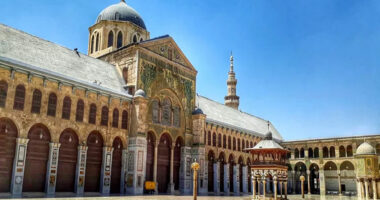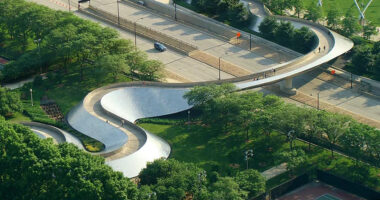In the heart of Toronto lies the Prince Edward Viaduct, a testament to the city’s rich history of civic infrastructure. Constructed a century ago by visionary commissioner Rowland Caldwell Harris, this architectural marvel has evolved from a functional bridge to a symbol of untapped potential. Today, architect Tye Farrow envisions a bold transformation: turning the viaduct into an “inhabited bridge” that bridges the gap between urban mobility and community engagement.

A Legacy of Innovation
Rowland Caldwell Harris’s foresight shaped Toronto’s urban landscape, laying the groundwork for future development and connectivity. By incorporating forward-thinking elements into the Prince Edward Viaduct, such as a lower deck for a future subway and ample space for pedestrian and vehicular traffic, Harris anticipated the city’s evolving needs with remarkable prescience.

Reimagining Urban Spaces
Despite its illustrious past, the viaduct now serves primarily as a thoroughfare for cars, devoid of the vitality and human interaction it once fostered. However, architect Tye Farrow sees this as an opportunity to breathe new life into the structure, reimagining it as a vibrant community hub that transcends traditional transportation infrastructure.
Bridging Communities
Farrow’s vision extends beyond mere aesthetics; it embodies a philosophy of inclusive urban design that prioritizes people over vehicles. By reclaiming a portion of the viaduct for pedestrian-friendly amenities such as markets, cafés, and cultural spaces, Farrow seeks to foster a sense of belonging and connection among residents from diverse backgrounds.

Integrating Nature and Culture
Central to Farrow’s vision is the integration of natural elements and cultural experiences, transforming the viaduct into a seamless extension of Toronto’s urban fabric. With the adjacent Don Valley undergoing revitalization efforts, the viaduct serves as a vital link between the bustling cityscape above and the tranquil green spaces below.

Embracing Sustainability and Innovation
Farrow’s proposal embraces sustainable design principles, utilizing mass timber construction and innovative materials to create a harmonious blend of form and function. By prioritizing pedestrian access and community engagement, the inhabited bridge concept represents a paradigm shift in urban planning, one that prioritizes human well-being and environmental stewardship.
Seizing Opportunities for Change
The COVID-19 pandemic has underscored the importance of flexible urban spaces and resilient infrastructure. As cities reimagine their futures in a post-pandemic world, initiatives like Farrow’s offer a glimpse of what’s possible when creativity, vision, and community collaboration converge.

Conclusion: Paving the Way for Urban Transformation
The Prince Edward Viaduct stands as a beacon of possibility—a canvas upon which the aspirations of a city are writ large. By embracing innovation and redefining the role of urban infrastructure, we have the opportunity to create spaces that not only connect us physically but also enrich our lives in profound ways. As Toronto looks to the future, the transformation of the viaduct serves as a testament to the power of collective imagination and the enduring spirit of urban innovation.

















